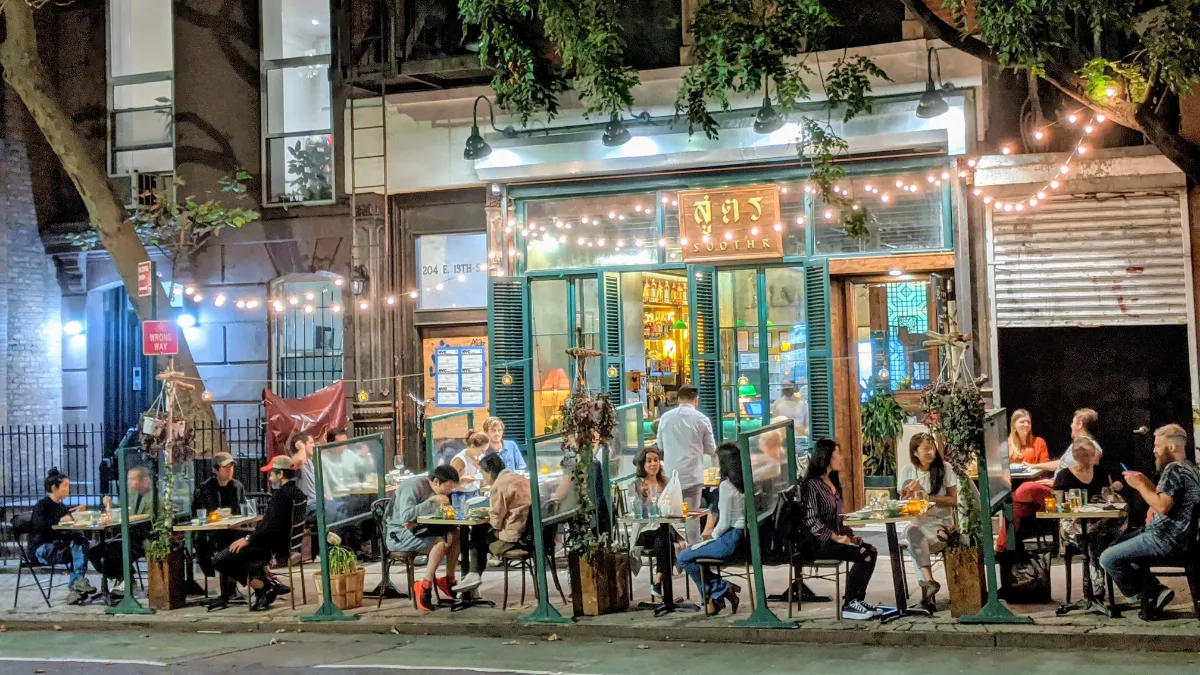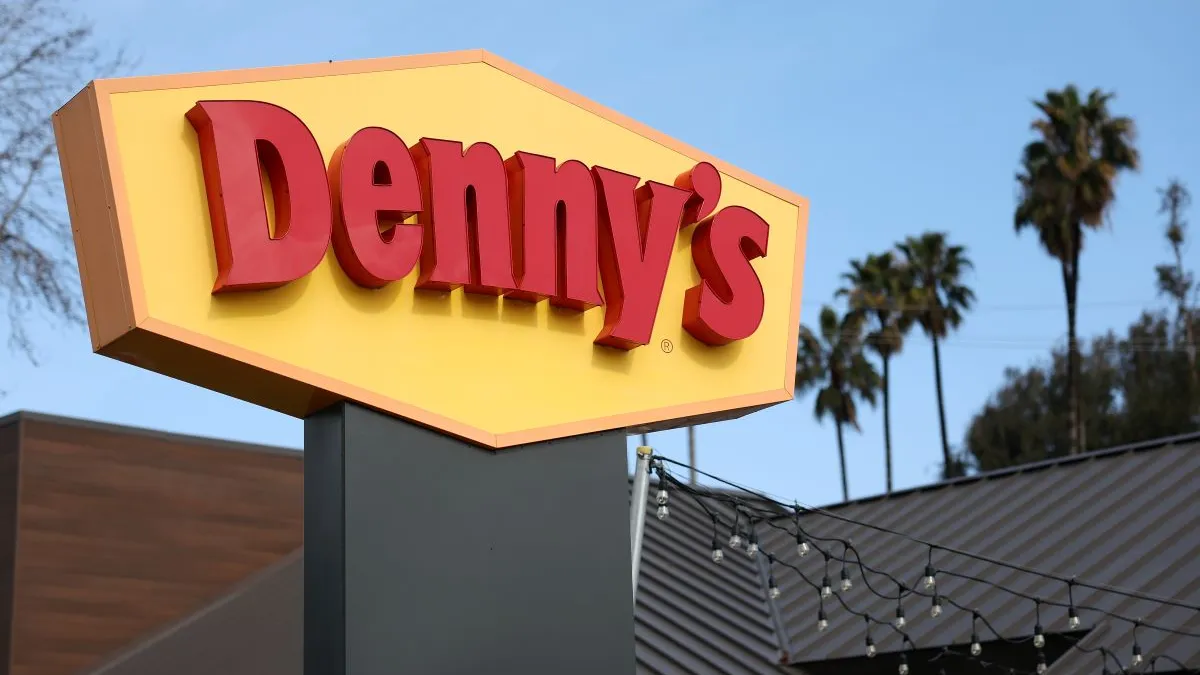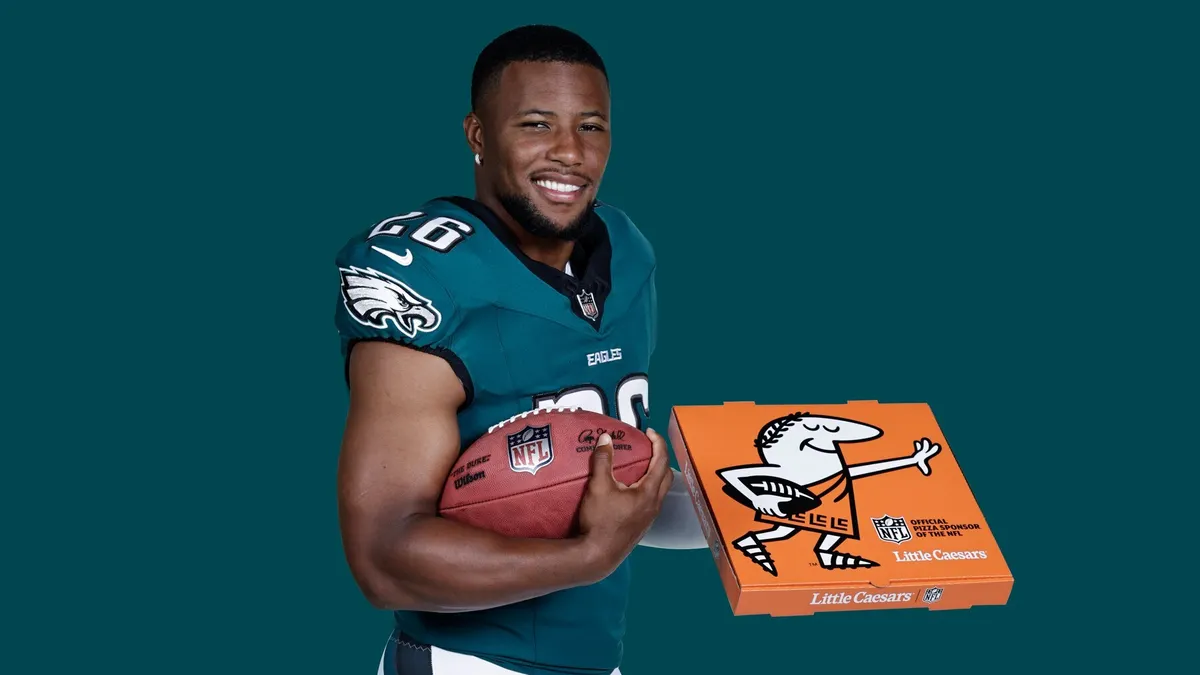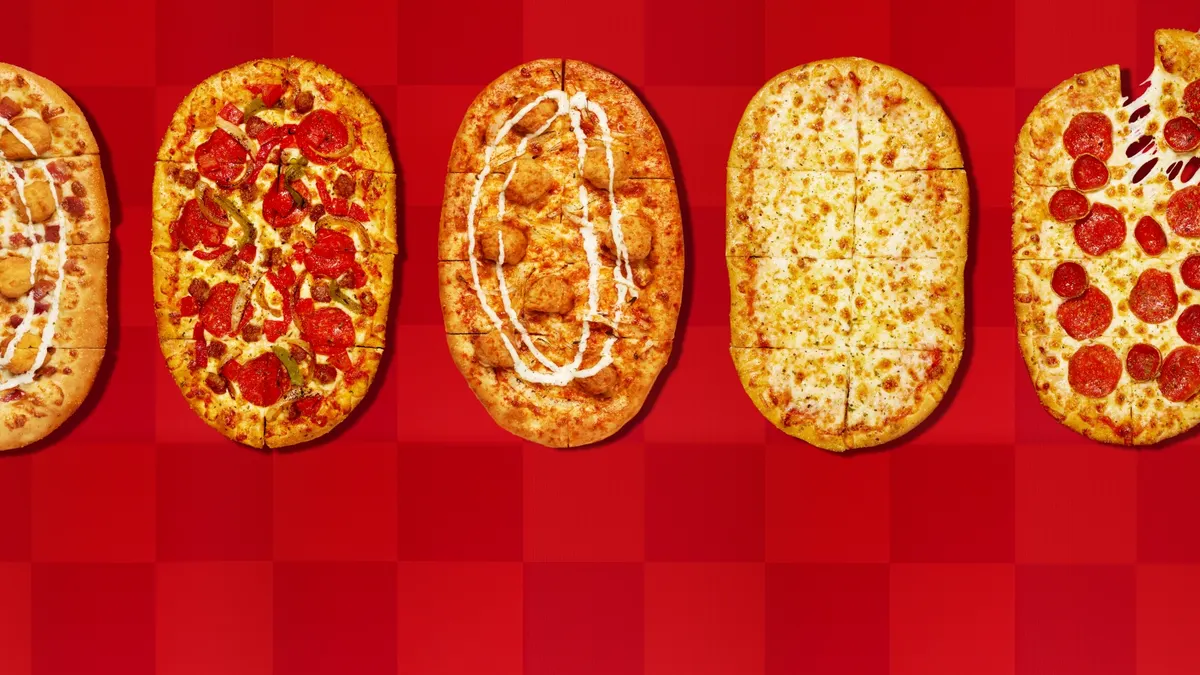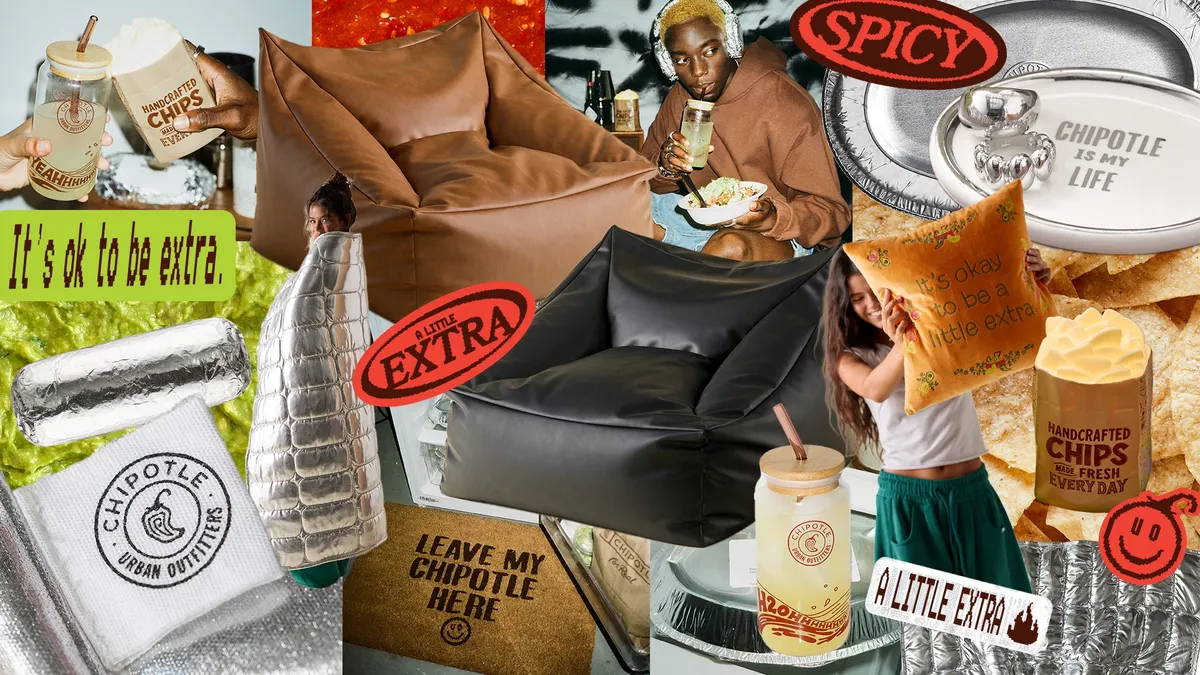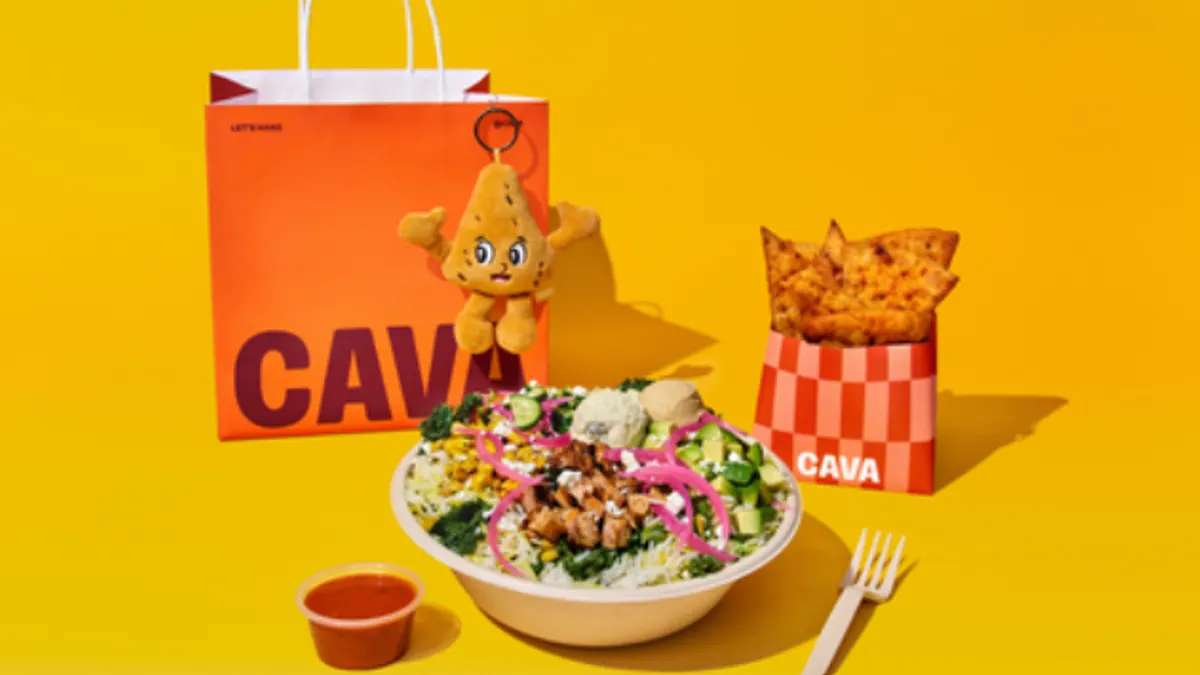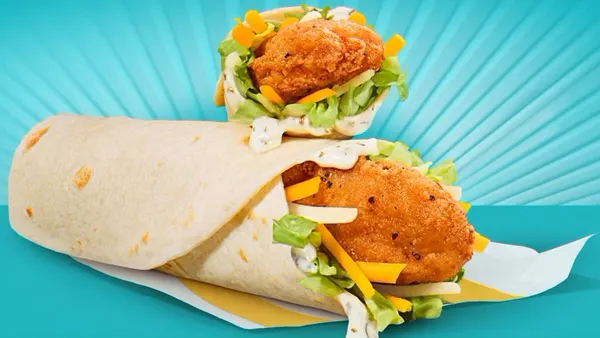This story is part of a series on the trends that will shape the industry in 2021. You can find all the articles on our trendline.
Though 2020 has been a year of incredible disruption and instability, the trends that dominated the restaurant space were already in motion long before the pandemic struck. With no end in sight for widespread dining room restrictions or consumer wariness of traditional restaurant experiences, analysts expect these trends to further crystallize in 2021.
Unsurprisingly, all of these movements are rooted in digital technology, reflecting diner demand for contactless and mobile-enabled restaurant engagement.
"Digital technology is really what's going to drive value creation going forward," Lauren Silberman, senior analyst at Credit Suisse, said. "It's really the combination of consumer-facing technology with … curbside, drive-thru, delivery, and also plays into the real estate and labor piece as well, because it's all interrelated. What you're seeing is this permeation of a holistic digital infrastructure."
That value creation is crucial as the pandemic wanes on, especially for restaurants without deep pockets.
"COVID is a liquidity event, in a sense," Bill Fahy, senior analyst at Moody's, said. "There's not a competitive response to what’s happening. If you’re a small business, you only have six weeks of liquidity. We’re going to see a lot of them go bankrupt."
Analysts predict some of these trends could help restaurants grow sales even in a tumultuous market environment. Curbside will become a powerful digital tool for restaurants without drive-thrus. Restaurants are increasingly interested in white label deals with third-party aggregators as a way to retain customer data while some are eyeing smaller locations and ghost kitchens to cater to off-premise demand.
Even with these opportunities, restaurants will continue to juggle labor costs and rising minimum wage, which will only become more of a challenge.
Learn more about the six trends predicted to define the restaurant world in 2021:
Diners will seek out digitally integrated curbside channels as a faster, cheaper alternative to delivery
Curbside has proliferated because it is a relatively low-cost way for restaurants without drive-thrus to launch their own off-premise channel. It also offers a key benefit to diners and restaurants: unlike third-party delivery, it provides convenience at no extra cost per order.
Curbside is a powerful option for restaurants that don’t have drive-thrus, Silberman said. This is part of the reason fast casuals had higher digital mixes even going into the pandemic, she said.
Generally, consumers are willing to pay $4 in delivery fees, Jean Chick, principal and U.S. restaurant & food service leader at Deloitte, said. Diners are also more interested in curbside pickup if the restaurant is within a 10-mile radius of the home because it could potentially be faster than having their food delivered, she said.
The category is still much smaller than drive-thru, and analysts agree that it is unlikely to ever drive the same volumes as that channel — and especially not in 2021, because diners haven't fully acclimated to the experience yet.
Customers are more familiar with queuing up in a drive-thru and ordering on the spot, Andrew Charles, a director at Cowen focused on the restaurant segment, said. Some diners may even see designated curbside parking spots, assume they are 15-minute parking spots and then order takeout inside the restaurant, he said.
But as curbside becomes more widely adopted, there will be opportunity to make it a solid percentage of sales. For example, Target makes about 4% to 5% of its sales from curbside. The channel also comes with the added benefit of being a digital transaction, which tends to be 20% to 25% higher than an in-store purchase, Charles said.
"You're going to have a much bigger focus on takeaway," Fahy said.
But because COVID-19 has also accelerated consumer adoption of mobile apps and technology for reservations, menus, payments and tipping, diners will expect curbside to be digitally integrated as well.
"We're seeing a huge investment in digital on the restaurant side for 2021 to enhance that customer experience, because if that is the only experience that they get, they want it to be a positive one because they can’t control the third-party deliveries," Chick said. "If it's a curbside pickup, it's a very quick interaction [for] customer experience and so they want the digital experience to be far and above the best experience that customers have so they'll have a repeat customer."
Chains will more easily adopt the curbside channel as a result of the technology investment required to make the channel as efficient and polished as possible, Charles said. Legacy brands like Dunkin' and Starbucks offer sophisticated technology that allows customers to click on their mobile device to alert the restaurant that they have arrived. Panera, for example, adopted geofencing technology during the early days of the pandemic. Chains can integrate curbside pickup with their loyalty programs as well, he said.
Independent restaurants will likely have customers call to have their orders brought out to them since they may not have the budgets for similarly robust technology, Charles said.
Curbside could also prove to be disruptive when it comes to competition between fast casual and QSR chains, though analysts are split on how much of a threat a fast casual with a digitally enabled curbside offering could pose to a restaurant with a drive-thru.
Chick believes that curbside capabilities can "absolutely" help fast casuals challenge fast food rivals if the customer experience is digitized, whether through QR codes for menus or contactless payments, to compete with QSR convenience.
"Customers want convenience, they want an enhanced digital experience, they want contactless payments," Chick said.
But Silberman is skeptical because these segments attract different consumer types. And QSR investment in new double-drive thrus, personalization at the digital menu screen and other efficiencies will keep the channel a step ahead of curbside growth, Chick said.
"QSRs have focused on getting their drive-thru times down. … If that happens, your curbside pickup is not going to be growing at the same rate that it has in 2020 because if you’re going to drive to the restaurant anyway, you might as well just go through the drive-thru," Chick said.
Despite high unemployment, labor costs will rise amid wage hikes and changing labor pools
Labor and rising minimum wage costs will be a challenge for restaurants in 2021. Before the pandemic, labor inflation was 3% to 5% per year, Fahy said. Florida recently approved a $15 minimum wage, and Chick thinks the restaurant industry will be looking to see how Florida restaurants react and how they manage those new labor costs. In late 2020, Starbucks committed to providing at least $15 an hour within three years, further illustrating the momentum to increase wages.
But a $15 minimum wage wouldn't necessarily work in all states, especially ones like Alabama where the cost of living is much lower than places like New York and California, where wages have been going up, Fahy said.
A lot of QSRs are still struggling to staff their restaurants as well, Chick said. Historically, restaurants would draw from a labor pool made up of high school and college students, and that has dried up over the years. So restaurants are struggling to adapt to that labor drought and this will be even more challenging if a $15 minimum wage comes to other states. Restaurants are also having to pay more for personal protective equipment, health insurance and wages that would retain good employees, Fahy said.
Chains will shift their focus from urban markets to suburbs and seek smaller footprints
With over 110,000 restaurants closed, real estate site selection and leases will experience changes in 2021. The restaurant industry will also continue to see new prototype expansion as restaurants try to optimize their portfolios after closing underperforming locations during the pandemic, Silberman said. Taco Bell, McDonald's, Arby's, Del Taco and Burger King have all said they are looking into restaurants with smaller dining rooms and larger drive-thrus.
Pre-pandemic, rent was 95% fixed with a 5% variable cost, but landlords are more willing to increase the variable percentage based on revenue, which has been limited with dining room closures, Fahy said.
Landlords have also been favorable to deferrals, but not necessarily abatements. This means rent that might not have been paid from April to June is just tacked onto the end of a lease with the addition of three months, for example, or spread the costs over time, Fahy said.
Some landlords may be incentivized to keep current tenants instead of trying to fill an empty space during a down economy, Fahy said. But experience overall will depend on how many properties a landlord owns. Landlords are less likely to be accommodating if they own one or two properties and this is their only source of income, Fahy said.
At the same time, restaurants that are looking into new locations are shifting their appetites. Chick believes there will be a decrease in demand for restaurant real estate overall, especially in urban areas around offices. Chick predicts those workplaces won't ever return to 100% capacity after the pandemic, and hybrid work models that offer virtual work will hurt foot traffic.
"We're seeing almost all of our restaurant clients look at different real estate footprints for any new location … and whether they'll have any dine-in or whether it will be only takeout and delivery or it will be a very small, limited dine-in experience," Chick said. "We're seeing that cross QSR and fast casual, not as much in fine dining because fine dining is a [premium] experience."
While many chains and restaurants have generally slowed down building new sites, access to Class-A sites will likely get easier, especially for bigger brands, Fahy said, because restaurants in prime locations are going out of business. Many casual chains are looking for better sites, many of which weren’t available until now. Brands are now focusing on suburbs and lifestyle centers, Fahy said.
Third-party partnerships are here to stay, but white label deals will rise amid fight for diner data
Prior to the pandemic, delivery only made up around 8% of sales for the industry, so there is plenty of opportunity to grow this channel on the other side of COVID-19, Charles said.
"We're going to enter 2021 with dire restrictions," Charles said. "So delivery is going to be a critical component in a quarantining world."
Free delivery promotions will likely continue to be a tool to market these offerings, especially since sales tend to be higher even after the promotion ends as awareness grows and people stick to the behavior of ordering delivery, Charles said.
"The question that ultimately comes into what we're looking at in 2021 and 2022 is about the stickiness of the consumer because you are seeing delivery menu prices inflate," Silberman said.
In many places, delivery and service fees are increasing, brought on by restaurants and third-party companies, Silberman said. But for QSRs and many public restaurants that appeal to customers' desire for value, delivery can undermine that offering because of the extra fees, Silberman said.
The number of restaurants that have traditionally done their own delivery, with some like Jimmy John's vowing to never team with a third-party platform, now partnering with aggregators also reflects the growing power of this segment, Silberman said. Self-delivery is expensive and operationally taxing, and it makes sense for a restaurant to outsource that part of their business, she said.
But restaurants will still want to keep control of the brand experience and of consumer data, so she predicts that 2021 will see an increase in white label partnerships where customers journey through the restaurant's website to access delivery. Using that data can provide restaurants the means to better incentivize customers to keep coming back, which has been a challenge for many restaurants since they don’t necessarily have the infrastructure in place to do that, Silberman said.
"How will these restaurant companies get a delivery transaction and try to ultimately convert that to a more creative pickup transaction or otherwise? Maybe that's not 2021, maybe that's 2022, but I certainly think that that's going to be an important part of the story and to do that they really need to integrate delivery in their apps in order to get the customer information," Silberman said.
White label relationships offer the best of both worlds, Silberman said, allowing restaurants to retain customer data while outsourcing delivery. Shake Shack began testing app-based delivery late in 2020 at three locations in the Miami area.
"So that's the first step and then the second step of that is, okay we now have a digital customer, how do we then decide where that customer actually … makes the transaction," Silberman said.
Virtual brands will benefit chains that have the bandwidth to balance brands
Based on the success companies like Brinker International — which expects It's Just Wings to generate $150 million in annual sales — have seen from their virtual brand concepts, Silberman predicts that major chains will continue to experiment with online-only offerings.
While there will be more virtual brands popping up over the next year, the biggest challenge for restaurants will be making both a virtual brand and a regular restaurant co-exist, Charles said. This will be especially true five years from now, when the market recovers to pre-COVID-19 volumes, Charles said. Restaurants are already reaping the benefits of increased sales from adding virtual brands, so they won't likely want to remove that channel when dining rooms go back to full capacity, he said.
But restaurants will have to balance maintaining a high level of customer service expected from dine-in guests with their virtual brand, Charles said.
That could mean that restaurants will have to increase labor in the back of the kitchen when dine-in business picks back up.
"If you're juggling balls, you can juggle two balls pretty easily," Charles said. "By the time you get to four and five balls, you're going to need another hand to help you do that."
Ghost kitchens will benefit brands that are mature enough to have robust delivery channels
Ghost kitchens have become an increasingly popular model for chains to expand their footprints and offer new menus without investing in more brick-and-mortar real estate.
These concepts also require less labor than a traditional restaurant, often requiring only two to three employees, Charles said. Benefits like this will continue to drive restaurants big and small to the channel in 2021 as operators look to grow their digital sales and reach new customers online, and the trend will likely take hold in cities.
"The explosion of ghost kitchens in more urban areas [is] going to happen first and then potentially spread out to the lower-cost real estate areas that are more suburban and more rural," Chick said. "Ghost kitchens really kind of generated their first concepts in the San Francisco area because the real estate cost is so high."
There is some concern over how consumers will react to a spike in restaurant brands that only exist online or via third-party delivery marketplaces, Chick said.
"The business model is there, it's just a question of whether or not the consumer will accept it. … For a new brand … something that’s not as well-established that just opened a ghost kitchen and has not created a digital presence or [digital customer base] and is trying to do that in a ghost kitchen, I think it will be harder," she said.
Restaurants that already have robust delivery sales and a strong digital presence will perform well at ghost kitchen outposts, Silberman said, but it would be a challenging environment for an independent or a chain that isn’t digitally savvy to put down roots and grow.
It's unlikely that ghost kitchens will "take over the entire restaurant industry in 2021," Chick said, but she expects to see strong growth in the market based on 2020 investment in the space and diner demand for delivery and digital accessibility.




